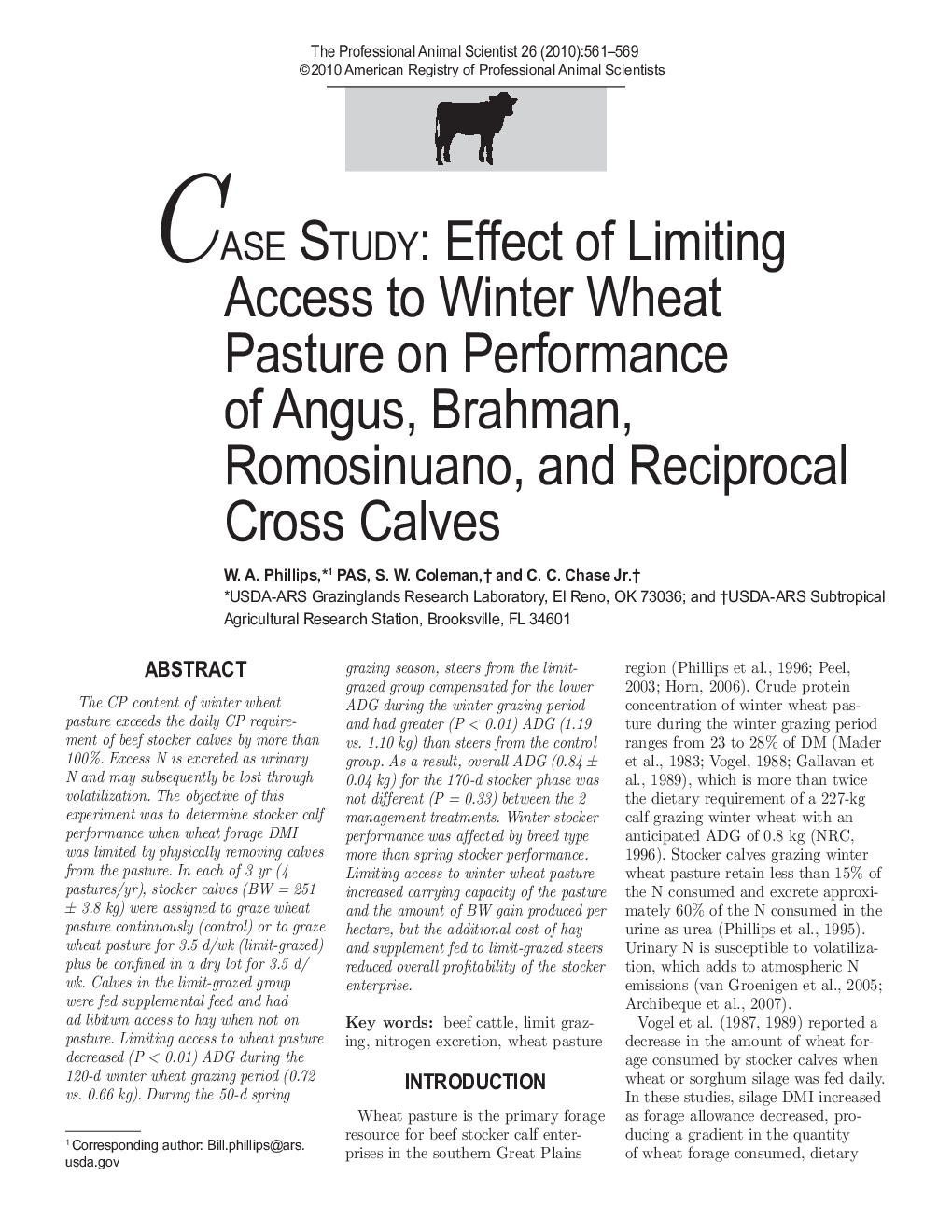| Article ID | Journal | Published Year | Pages | File Type |
|---|---|---|---|---|
| 2453994 | The Professional Animal Scientist | 2010 | 9 Pages |
Abstract
The CP content of winter wheat pasture exceeds the daily CP requirement of beef stocker calves by more than 100%. Excess N is excreted as urinary N and may subsequently be lost through volatilization. The objective of this experiment was to determine stocker calf performance when wheat forage DMI was limited by physically removing calves from the pasture. In each of 3 yr (4 pastures/yr), stocker calves (BW = 251 ± 3.8 kg) were assigned to graze wheat pasture continuously (control) or to graze wheat pasture for 3.5 d/wk (limit-grazed) plus be confined in a dry lot for 3.5 d/ wk. Calves in the limit-grazed group were fed supplemental feed and had ad libitum access to hay when not on pasture. Limiting access to wheat pasture decreased (P < 0.01) ADG during the 120-d winter wheat grazing period (0.72 vs. 0.66 kg). During the 50-d spring grazing season, steers from the limit-grazed group compensated for the lower ADG during the winter grazing period and had greater (P < 0.01) ADG (1.19 vs. 1.10 kg) than steers from the control group. As a result, overall ADG (0.84 ± 0.04 kg) for the 170-d stocker phase was not different (P = 0.33) between the 2 management treatments. Winter stocker performance was affected by breed type more than spring stocker performance. Limiting access to winter wheat pasture increased carrying capacity of the pasture and the amount of BW gain produced per hectare, but the additional cost of hay and supplement fed to limit-grazed steers reduced overall profitability of the stocker enterprise.
Related Topics
Life Sciences
Agricultural and Biological Sciences
Animal Science and Zoology
Authors
W.A. PAS, S.W. Coleman, C.C. Jr.,
